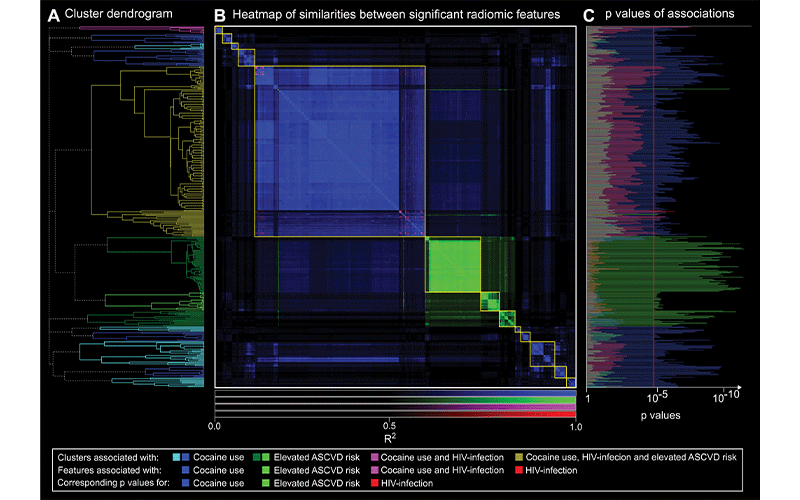Radiomics Shows Cocaine Fuels Coronary Artery Disease Risk
Study can help improve understanding of cardiovascular disease, cancer and other conditions

Radiomics provides a refined understanding of how cocaine use and other risk factors affect the course of coronary artery disease, according to a study in Radiology.
Historically, imaging techniques like coronary CT angiography provided information on atherosclerosis by describing the degree of stenosis, or narrowing, in the coronary arteries. While measures of stenosis are useful, they are not always the most precise way to assess the risk of an adverse event like a heart attack.
“Some people have very bad stenosis where the vessels are 90% blocked and do fine, while others with only 40% to 50% stenosis die suddenly without warning,” said study lead author Shenghan Lai, MD, MPH, professor of epidemiology and public health at the Institute of Human Virology at the University of Maryland School of Medicine and adjunct professor of epidemiology at Johns Hopkins Bloomberg School of Public Health, both in Baltimore. “This shows that not just stenosis but the nature of the plaque itself may play a very important role in risk assessment.”
Coronary Artery Disease More Likely to Develop in Patients Who Have Used Cocaine
In the new study, Dr. Lai, Márton Kolossváry, MD, PhD, a pioneer in the use of radiomics in cardiovascular imaging, and colleagues assessed whether different cardiovascular risk factors have distinctive contributions to the changes in plaque over time. Risk factors assessed included cocaine use and HIV infection.
The study group included 300 individuals with subclinical coronary artery disease as confirmed via coronary CT angiography. Changes in 1,276 radiomic features were analyzed over an average of four years follow-up. The data were derived from the Heart Study, a longitudinal investigation of the effects of HIV and cocaine use on subclinical coronary artery disease, which has been funded by the National Institute on Drug Abuse for 21 consecutive years.
Radiomics-based analysis indicated that conventional risk factors, cocaine use, and HIV-infection each have different effects on changes in coronary atherosclerosis over time. Cocaine use was significantly associated with almost a quarter of the radiomics features. HIV infection, in contrast, was linked to only slightly more than 1% of radiomics features. The study also revealed that HIV infection had a more profound effect on coronary artery disease in younger individuals.
“Cocaine use plays an important role in the pathogenesis of coronary artery disease,” Dr. Lai said. “Cocaine users with HIV should abstain from cocaine use to lower the risk of coronary artery disease.”
The results suggest that rather than having a complex interconnected network of factors contributing to the development of atherosclerosis, the effects of different risk factors may correspond to specific known or unknown pathways of disease progression. This information will likely provide a more complete picture of the state of cardiac health.
“We want to figure out why some people die early, why some die suddenly, and why some people go on and on even if they have very significant fixed disease,” Dr. Lai said. “With radiomics, we can use a CT image or an MR image, because these images have more data than just stenosis.”
Dr. Lai said the radiomics technology used in the study could have applications beyond cardiovascular assessment, such as cancer and diseases of the lungs.
“The technology is there, that’s not the key obstacle,” he said. “The key obstacle is that not enough physician-researchers have access to this information.”
For More Information
Access the Radiology study, “Contribution of Risk Factors to the Development of Coronary Atherosclerosis as Confirmed via Coronary CT Angiography: A Longitudinal Radiomics-based Study.”
Read previous RSNA News articles on cardiac radiology:
